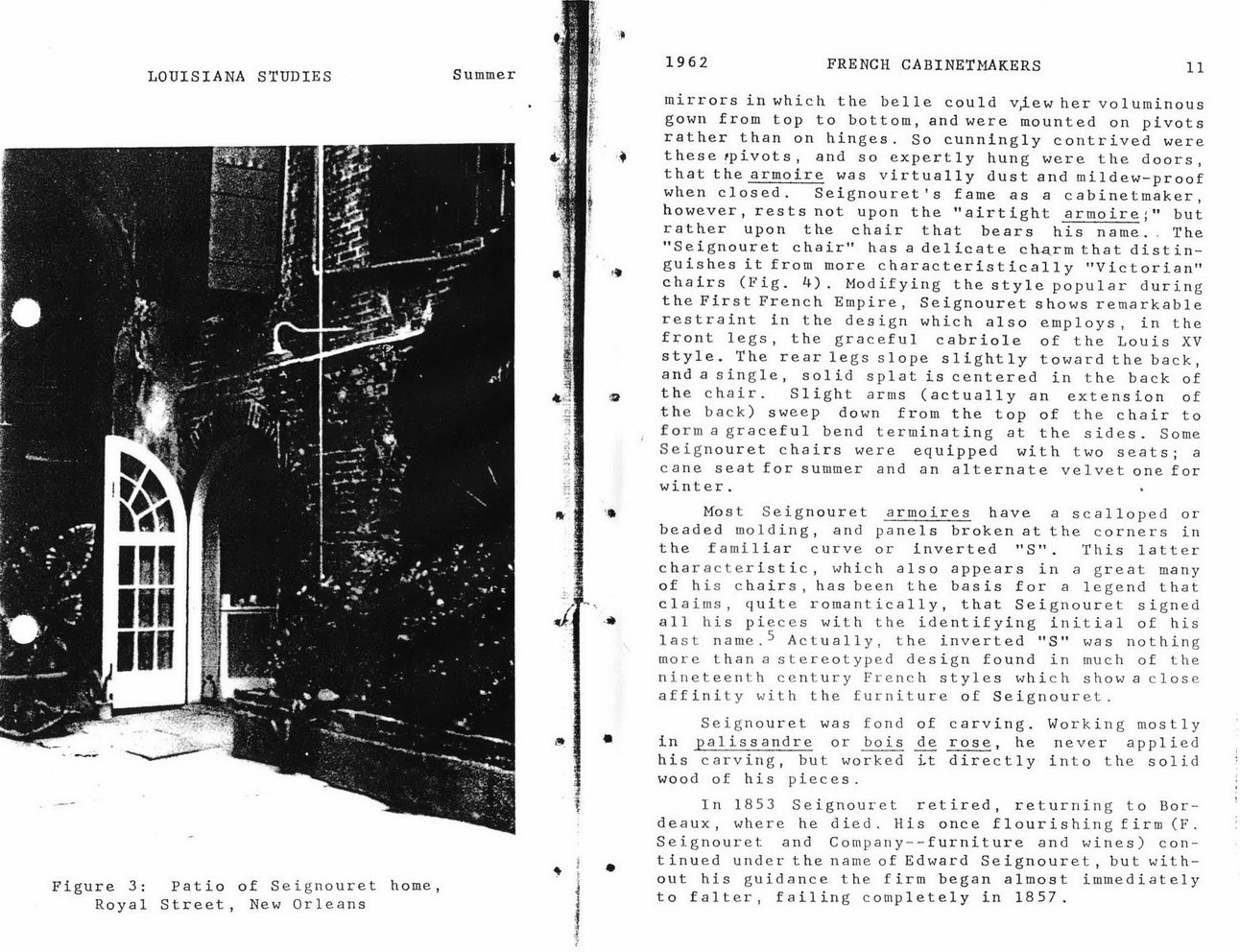This text was obtained via automated optical character recognition.
It has not been edited and may therefore contain several errors.
Figure 3: Patio of Seignouret home, Royal Street, New Orleans 1962 FRENCH CABINETMAKERS 11 mirrors in which the belle could v,iew her voluminous gown from top to bottom, and were mounted on pivots rather than on hinges. So cunningly contrived were these fpivots, and so expertly hung were the doors, that the armoire was virtually dust and mildew-proof when closed. Seignouret?s fame as a cabinetmaker, however, rests not upon the "airtight armoire;" but rather upon the chair that bears his name. . The "Seignouret chair" has a delicate charm that distinguishes it from more characteristically "Victorian" chairs (Fig. 4). Modifying the style popular during the First French Empire, Seignouret shows remarkable restraint in the design which also employs, in the front legs, the graceful cabriole of the Louis XV style. The rear legs slope slightly toward the back, and a single, solid splat is centered in the back of the chair. Slight arms (actually an extension of the back) sweep down from the top of the chair to form a graceful bend terminating at the sides. Some Seignouret chairs were equipped with two seats; a cane seat for summer and an alternate velvet one for winter. Most Seignouret armo ires have a scalloped or beaded molding, and panels broken at the corners in the familiar curve or inverted "S?. This latter characteristic, which also appears in a great many of his chairs, has been the basis for a legend that claims, quite romantically, that Seignouret signed all his pieces with the identifying initial of his last name.5 Actually, the inverted "S" was nothing more than a stereotyped design found in much of the nineteenth century French styles which show a close affinity with the furniture of Seignouret. Seignouret was fond of carving. Working mostly in palissandre or bo is de rose, he never applied his carving, but worked it directly into the solid wood of his pieces. In 1853 Seignouret retired, returning to Bordeaux, where he died. His once flourishing firm (F. Seignouret and Company--furniture and wines) continued under the name of Edward Seignouret, but without his guidance the firm began almost immediately to falter, failing completely in 1857.

Mallard Furniture-(French-Cabinetmakers-in-the-Vieux-Carre-by-Charles-D.-Peavy-1962)-part3